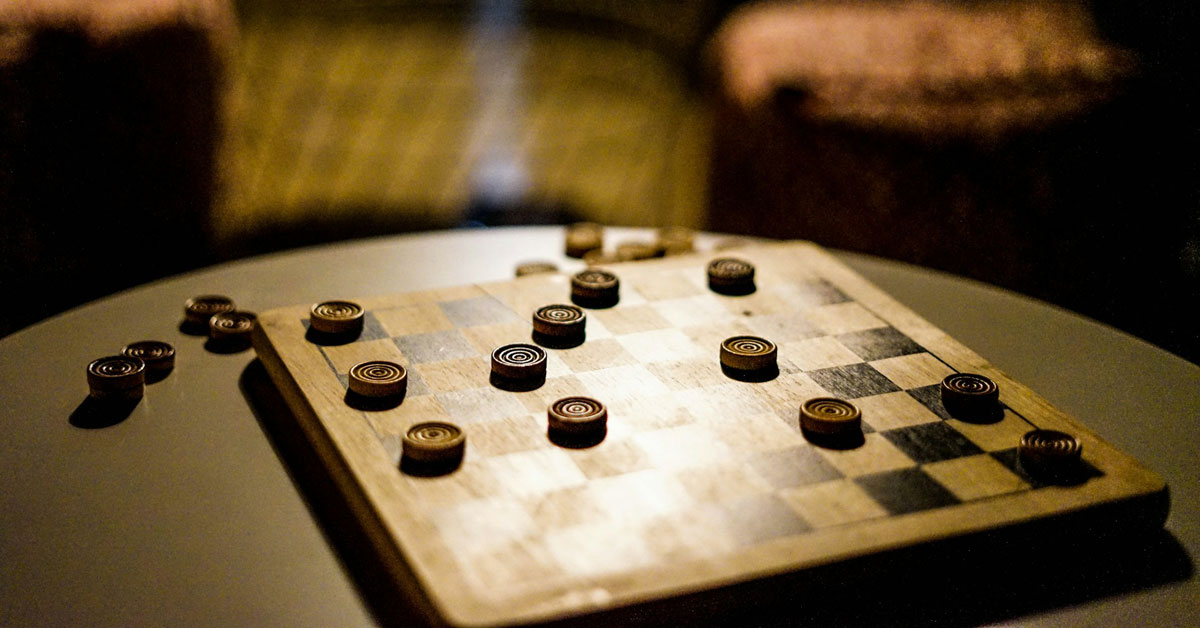Kumuschiwa everyone! It’s been a while (spell years) since I made a post. And today, we will talk about Filipino Checkers.
Filipino Checkers (Filipino Draughts)—locally known as Dama—is a two-player turn-based abstract strategy board game that is played in the Philippines. It’s a member of the checkers or draughts family of board games.
Table of Contents
Objective
The objective of the game is to capture all of your opponent’s pieces or to force your opponent to a position where none of their pieces can move by blocking all of their pieces.
Equipment
The equipment needed are the dama board and 24 pieces or checkers called Man or Pawn.
Pieces
Pieces are divided into 12 light and 12 dark—called “White” & “Black”—pieces. One damador (dama player) plays as White and the other as Black. Damadors sometimes resourcefully uses bottle caps as pieces.
Board
There are two types of board that we can use for this game. The first one—known as Dama Matrix or Damahan—is a square board with 7×6 intersecting diagonal lines that makes a total of 32 points. One of the diagonals run through the center of the board as shown in the image. Pieces are placed on the points instead of inside the spaces and they move along the diagonal lines.

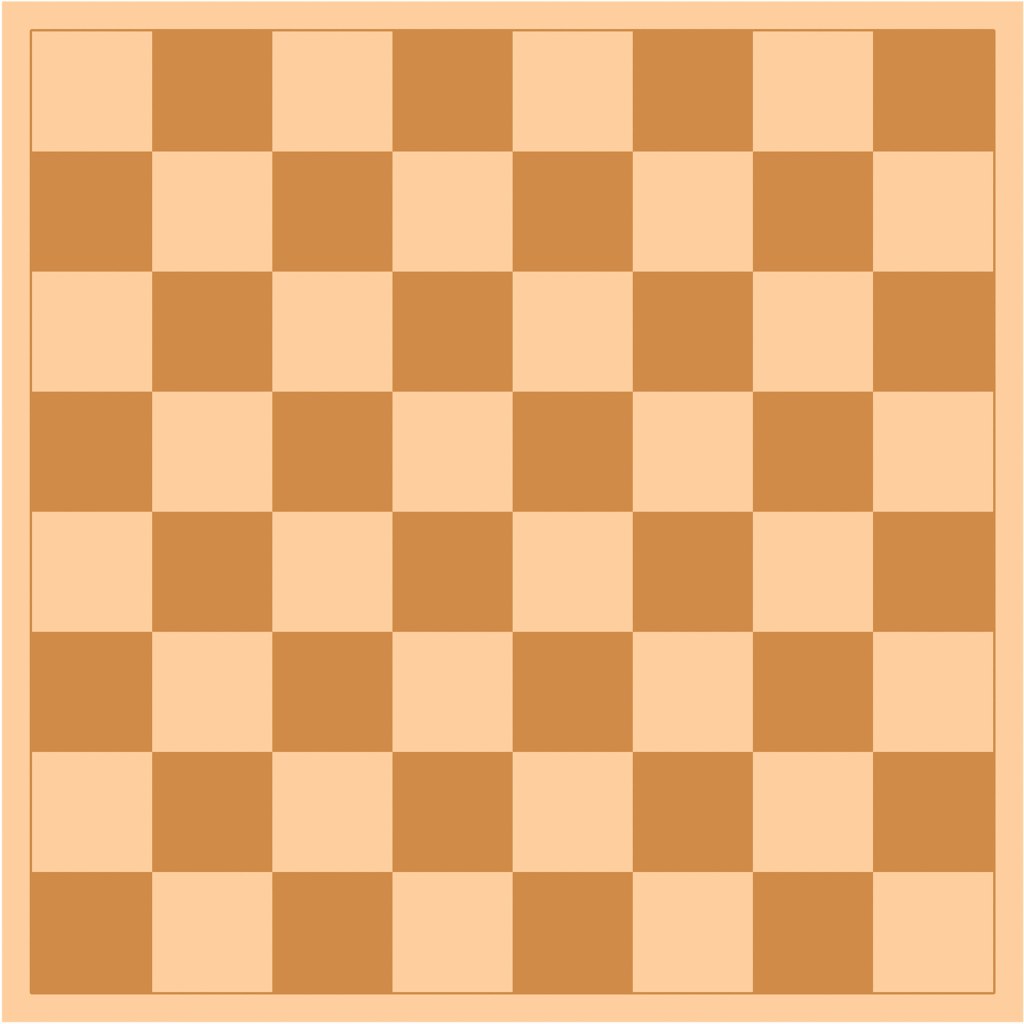
The other one is an 8×8 checkerboard with a light colored square or space at the bottom right corner of the board just like in chessboards. And just like in chess, pieces are placed inside the squares.
The last row from each player is called their Kings Row.
Board Orientation
There are also two types of board orientation played in the Philippines. They are the Luzon Board and the Vismin Board—sometimes called the Tagalog Board and the Bisaya Board respectively. They are so named because of where they are widely used.
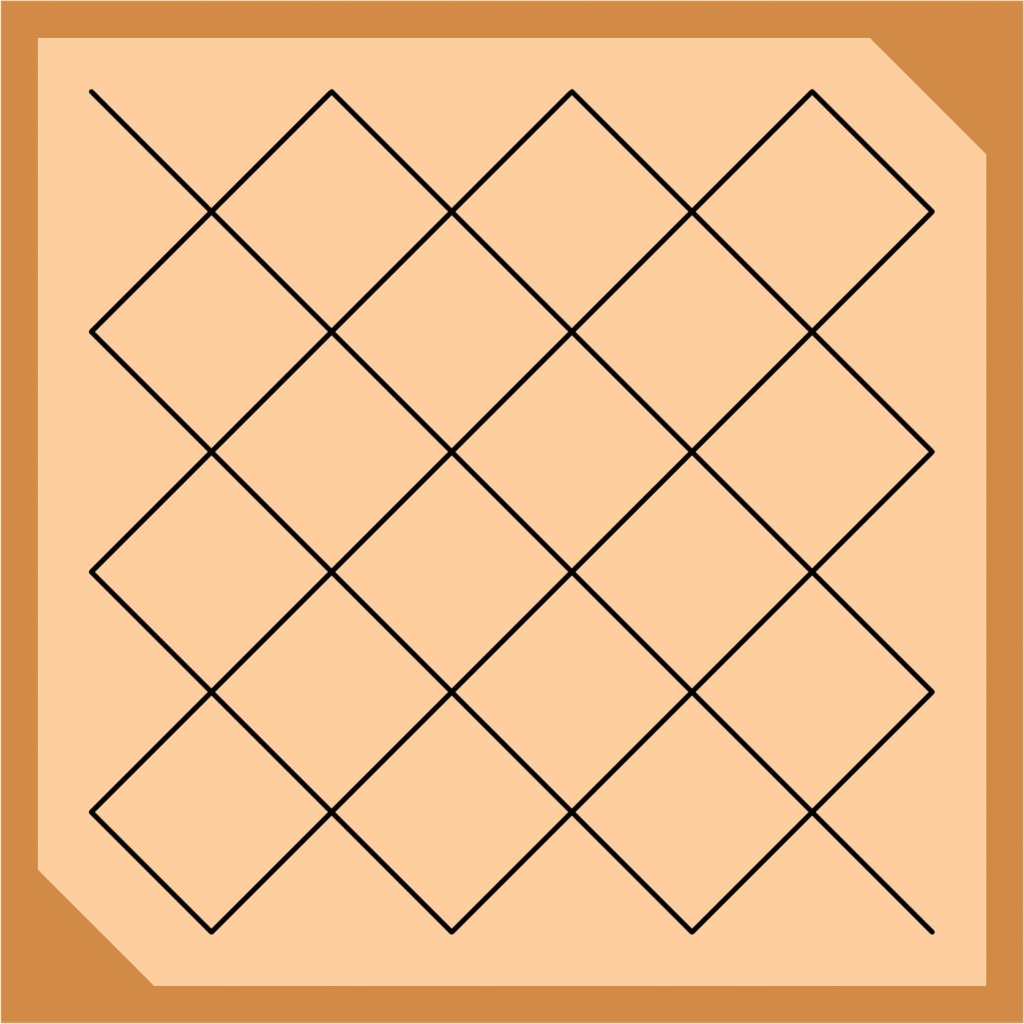
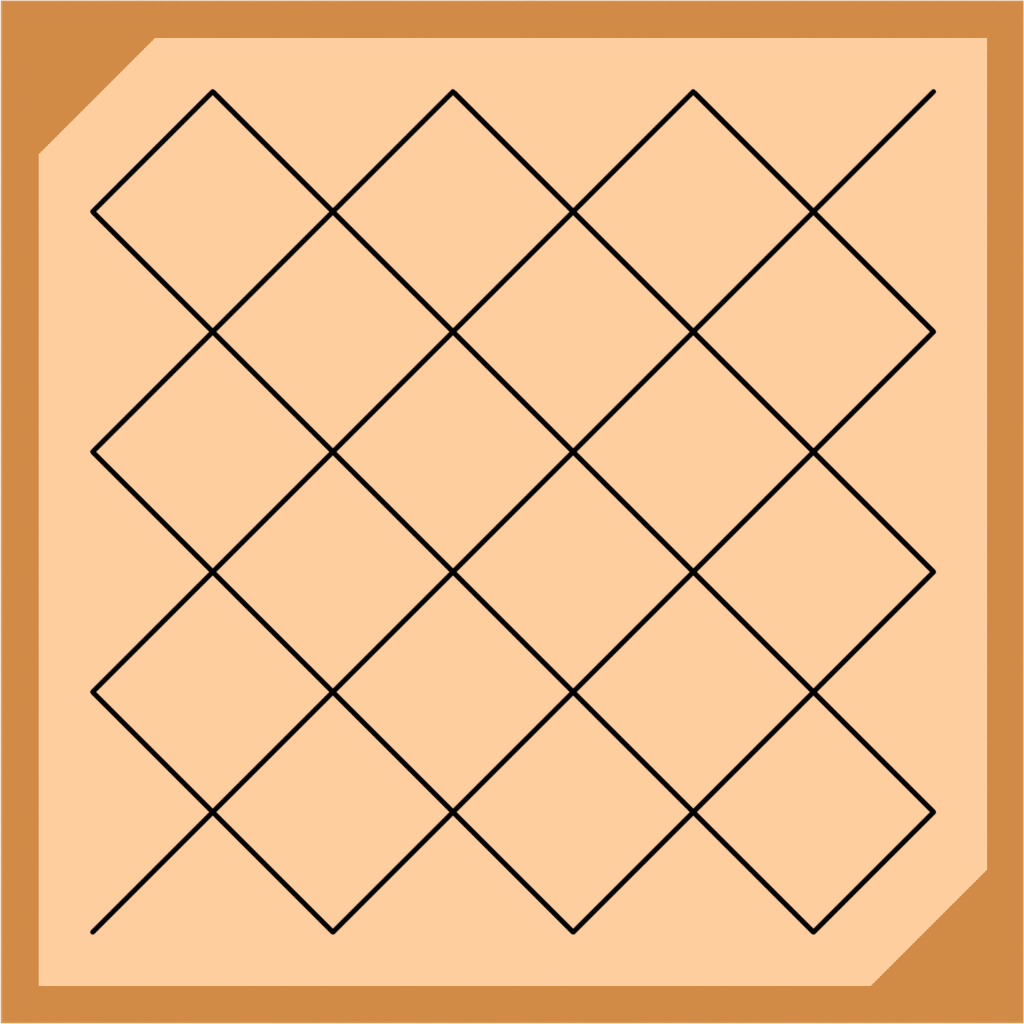
The Luzon Board is widely used in Luzon while the Vismin Board is widely used in Visayas and Mindanao—known as the three principal geographical areas in the Philippines.
The only difference between the two board orientations is where the double corner is located—the corners with two points or spaces on the board. In the Luzon Board, the double corner is at the bottom left of each damador while it is at the bottom right for the Vismin Board.
If played on a chessboard, the Luzon Board uses the light squares while the dark squares are used for the Vismin Board.
The rules for both orientations are just the same. So whether you would like to play with one board orientation over the other is just a matter of preference and where you are playing it. As far as I know, there is currently no official governing body for checkers here in the Philippines that oversees which board orientation is to be used officially.
I grew up playing with the Luzon Board as I was born and raised in Luzon but I do play with either board orientation right now.
Setup
The setup of the game looks just like the photos below. Pawns are placed in the first three rows nearest to each player.
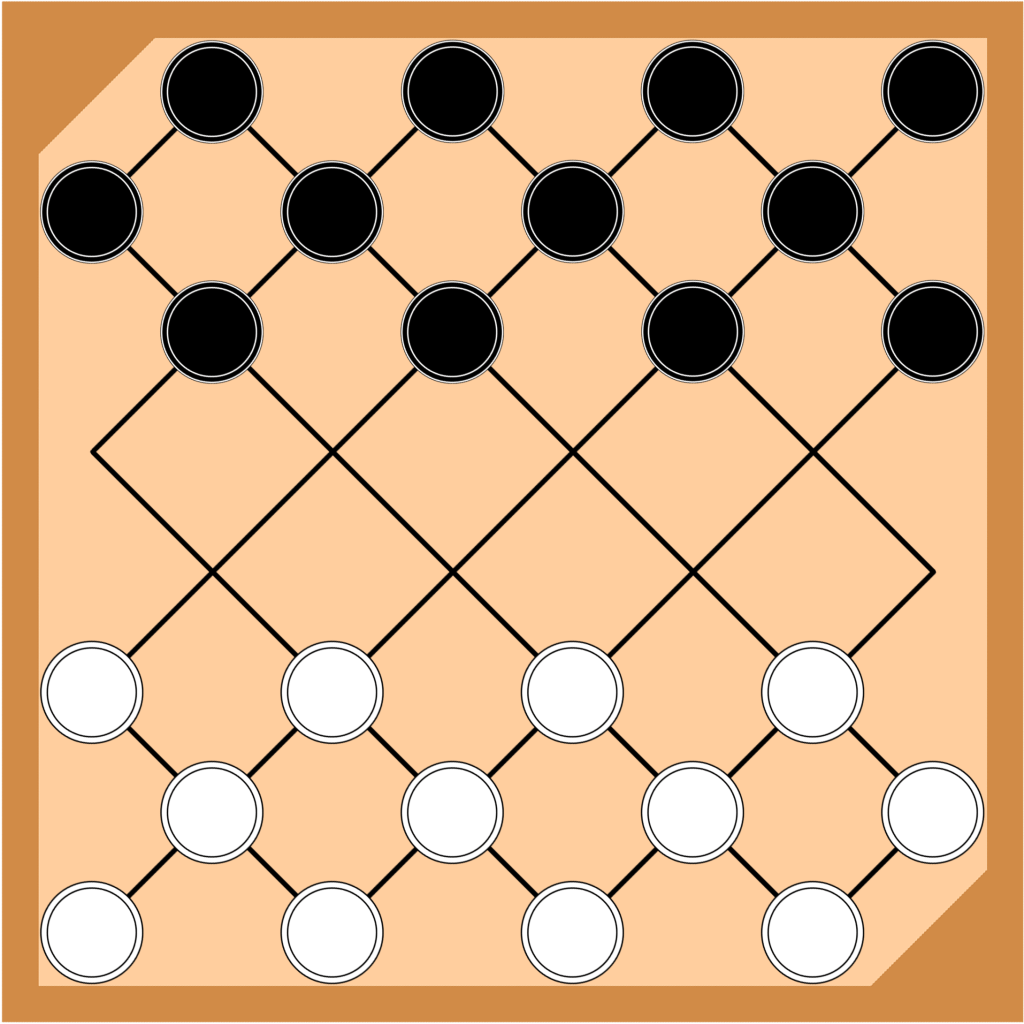

To review, the Luzon Board uses the longest diagonal cutting upward from right to left, while the Vismin Board uses the longest diagonal cutting upward from left to right.
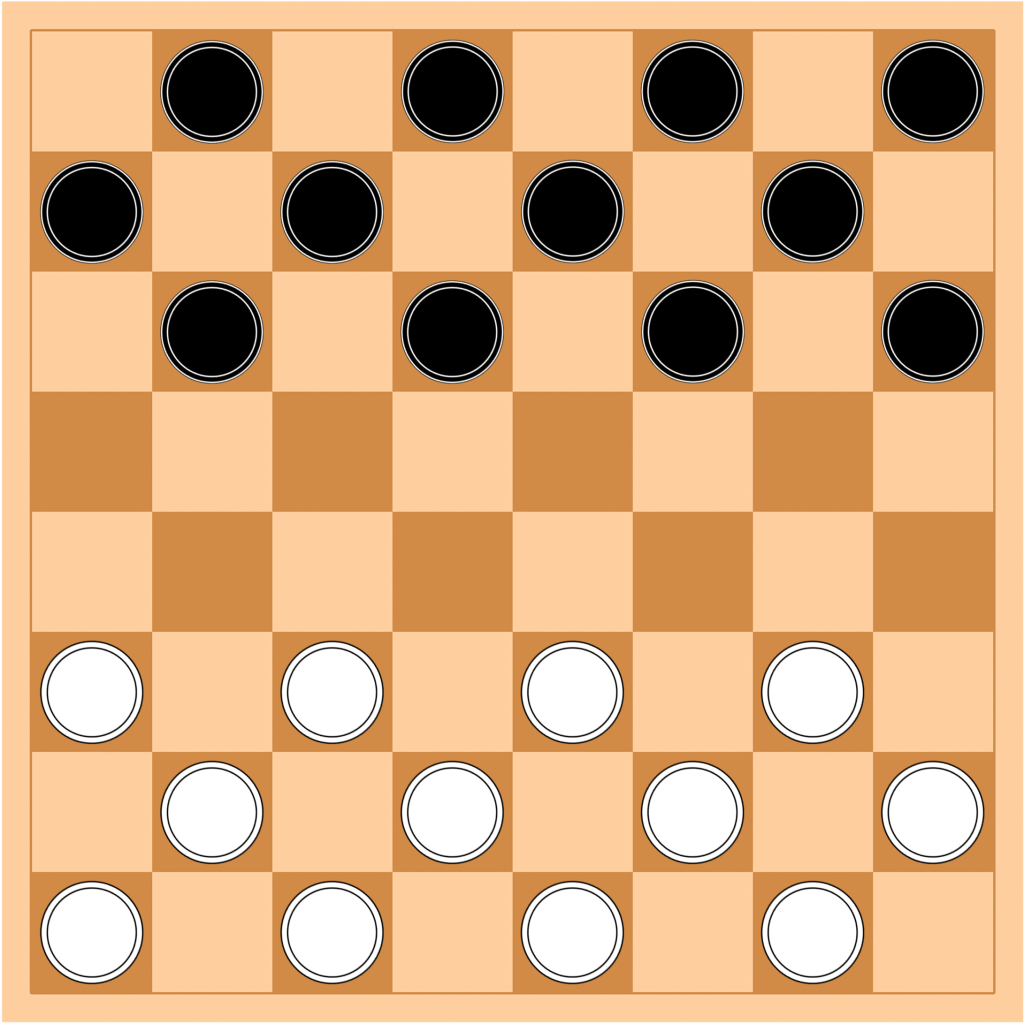
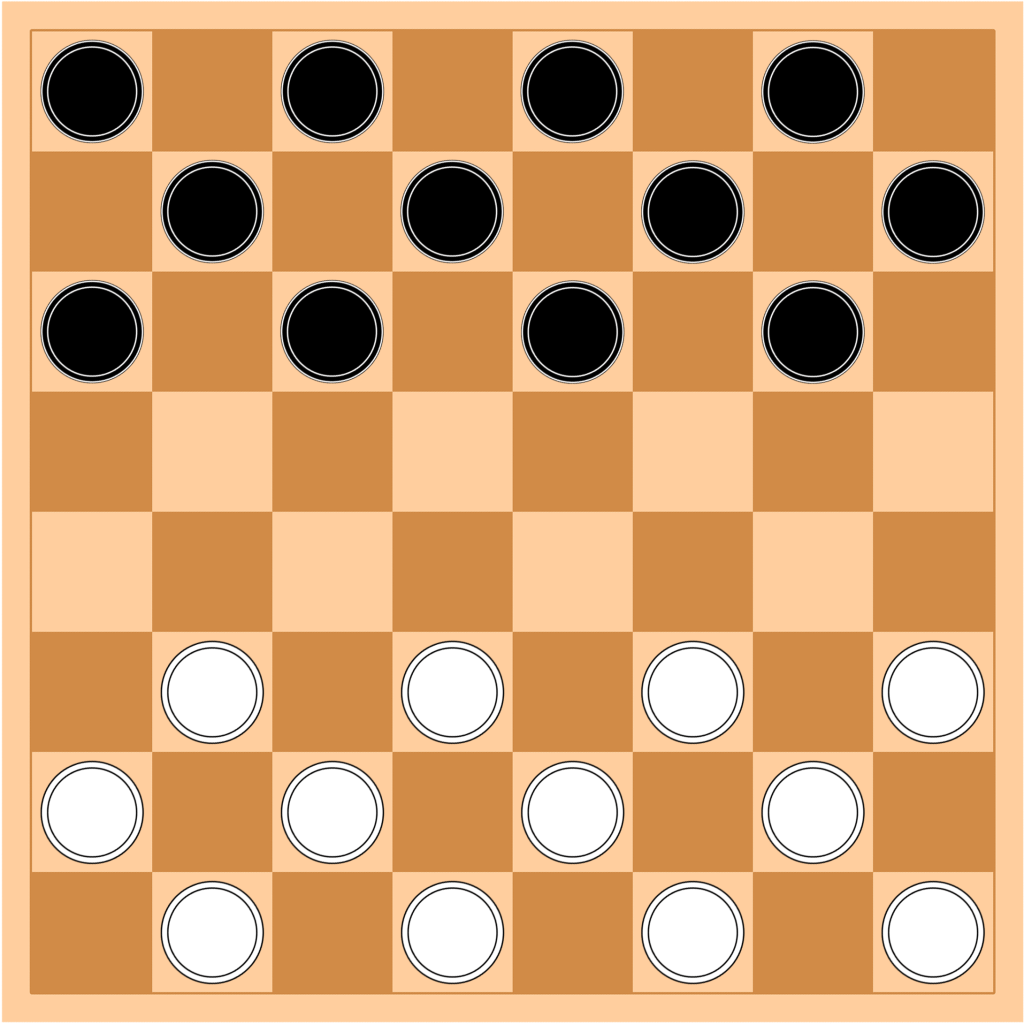
Rules
Moves
The player with the white pieces moves first. Players then take turns moving one piece at a time and cannot pass. They can move any of their pawns one point or space diagonally forward but cannot move backwards. No two pieces whether friendly or foe can occupy the same point. A pawn is blocked if both points diagonally forward are occupied by any pieces that they can’t capture.
Captures
A pawn can capture any enemy piece one point before or after it by jumping over that piece and landing on the empty point after that piece. Which means that capturing can be done either forward or backward. A piece cannot be captured if the space after it is occupied.
Capturing is mandatory and must be done immediately during the player’s turn. If another piece can still be captured after a capture was made during the same turn, then that second piece must also be captured and so on. Player should continue capturing as many pieces as possible during its turn.
In the event that a capture is possible in several ways, the player must choose the sequence which will yield the most captures. If there are two or more sequences with the same maximum number of possible captures, then the player can choose any of them.
Jumping over the same enemy piece more than once is not allowed. Enemy pieces are then only removed from the board after all possible jumps were made.
In case a player missed (whether intentionally or unintentionally) a capture or didn’t make the maximum captures for that turn, that player should correct their move and make all possible captures for that turn.
In addition, a piece cannot jump over a friendly piece.
Crowning
A pawn that lands and stops on any points in the kings row after a turn—whether by an ordinary move or after capturing the last piece in a capture sequence—will be crowned King or Dama (hence the local name of the game).
Which means that if a pawn lands in the kings row after a capture and another capture is still possible during that same turn, then that pawn should still capture backward without being crowned. Thus, a pawn can only be crowned if it stops in the kings row after its turn.
In addition, crowning should be done immediately after a player made their move during the same turn.
Flying King
The King can move any number of points diagonally forward or backward. It can capture any distance along a diagonal line either forward or backward by jumping or flying over the enemy piece so long as all the points between them are unoccupied.
The king can choose to land on any unoccupied points after the captured piece. However, the king is still bound by the same capture rule: that is to mandatory capture as many pieces as possible during that turn.
In addition, a king can also not fly over a friendly piece nor over two or more pieces that are next to each other.
Endgame
The player that captures all of their opponent’s pieces wins the game. Alternatively, the player with no available legal moves loses the game.
In an endgame where only kings are left on the board and one player only has one king left versus three or more opposing kings, a countdown will be started by the player with only one king. The game will result into a draw if the lone king is still not captured after its twelfth move (before its thirteenth move).
Please note that the countdown will only start if there are no pawns left on the board. In addition, a player with only three kings left can only hope to capture the opposing lone king if one of the kings is positioned in the center diagonal.
An endgame with only one or two kings versus one king is automatically a draw as neither can possibly win in these situations.
Both players can also agree to draw the game. One damador may also resign and give the victory to the other.
Additional Optional Rules
Some of these rules are used or added in some variations.
- In a 1 vs 3 or more kings only endgame, the king of the weaker side should be captured before it can make its twelfth move.
- In some variation, the stronger side with three or more kings will start the countdown and should capture the enemy king in 12 moves or less, otherwise the game is a draw.
- If a pawn and a king can capture the same maximum number of pieces during the same turn, then the player must capture with the king (mayordama).
- If a player fails or refuses to make a mandatory maximum capture during their turn, then that piece will be removed from the board (huffed).
- The game is a draw if the same position happens the third time with the same player having to move each time. The said position doesn’t need to happen consecutively.
- The game is also a draw if only kings were moved and no captures were made nor pawns were moved for 20 straight.
Notation
I made a separate post for notating Filipino Checkers. You can read it at How to Notate Filipino Checkers.
Using a Chess Set
Filipino Dama can also be played over the board using a standard western chess set. Depending on the orientation, either the light or dark squares can be used as mentioned earlier.
For the pieces, the eight pawns, two knights and two rooks can act as pawns or men. While the taller pieces: bishops, queen and king can act as kings.
Initial setup will look like these virtually:
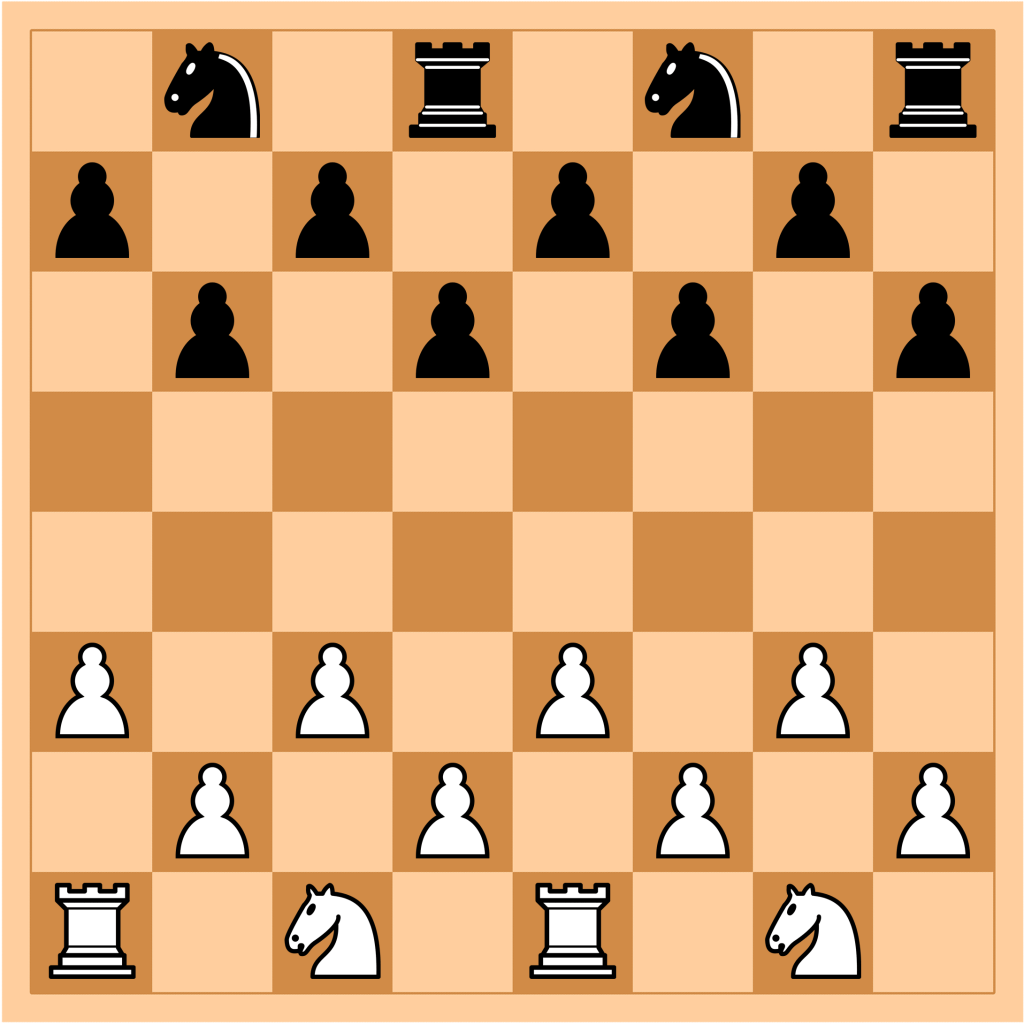
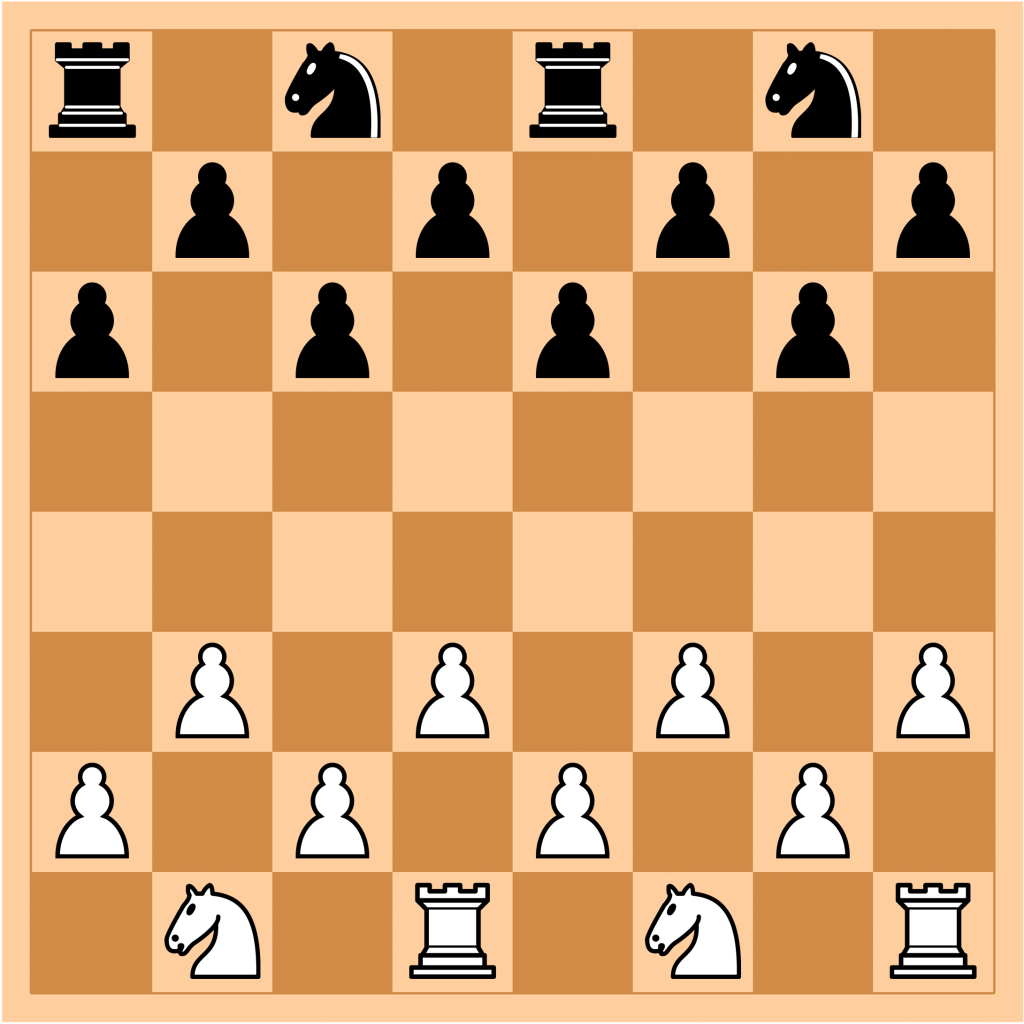
Perdigana
Another variant that is played in the Philippines is Perdigana. From Spanish pierde gana “losses wins.” The rules are similar as that of regular dama. However, whoever losses the game wins it. Which means that whoever has no legal moves or first to have all their pieces captured by their opponent wins the game. This is like the Filipino Dama version of Anti-checkers, Losing Draughts, Giveaway Checkers or Suicide Draughts.
Names
The game is widely known as dama—from the Spanish dama which means dame or lady. However, it may also come in different names. Basically the noun checkers (may also be spelled chequers), draughts or dama with the adjective Filipino, Pinoy or Philippine:
- Filipino Checkers
- Filipino Draughts
- Filipino Dama
- Pinoy Checkers
- Pinoy Draughts
- Pinoy Dama or Damang Pinoy
- Philippine Checkers
- Philippine Draughts
- Philippine Dama
I found several sources online saying that Brazilian Checkers—which has similar rules as Filipino Dama—is played as dama and called derecha here in the Philippines. However, I never encountered the term here in the Philippines.
Trivia
- Another variant called Damath was invented and played here in the Philippines. Damath is a portmanteau of dama and mathematics. It is played on a checkerboard with mathematical operations and uses chips or checkers with numerical values on it.
- The rules of Filipino Dama is similar as that of the International Draughts and Canadian Checkers. However, they are played on a 10×10 and 12×12 board respectively.
- The Brazilian Checkers has similar rules, board size and orientation as that of the Vismin Board. While orientation is mirrored in the Luzon Board.
- Pool Checkers and Jamaican Checkers have the same board orientation as that of Vismin Board and Luzon Board respectively. They also have similar rules except that the player with the black pieces moves first and any sequence of capture may be chosen as long as all possible captures in that sequence are made.
- Russian Draughts is also similar. Except that in the event that a pawn touches the kings row in the middle of a capture sequence, then it can promote to and continue capturing as a king during that turn. Also, any sequence of capture may be chosen as long as all possible captures are made in that chosen sequence.
- Interestingly, a square board with 32 squares rotated forty-five degrees was proposed in the 19th century. Unlike the traditional board, all the squares are used in this one. They will look like these if used today:
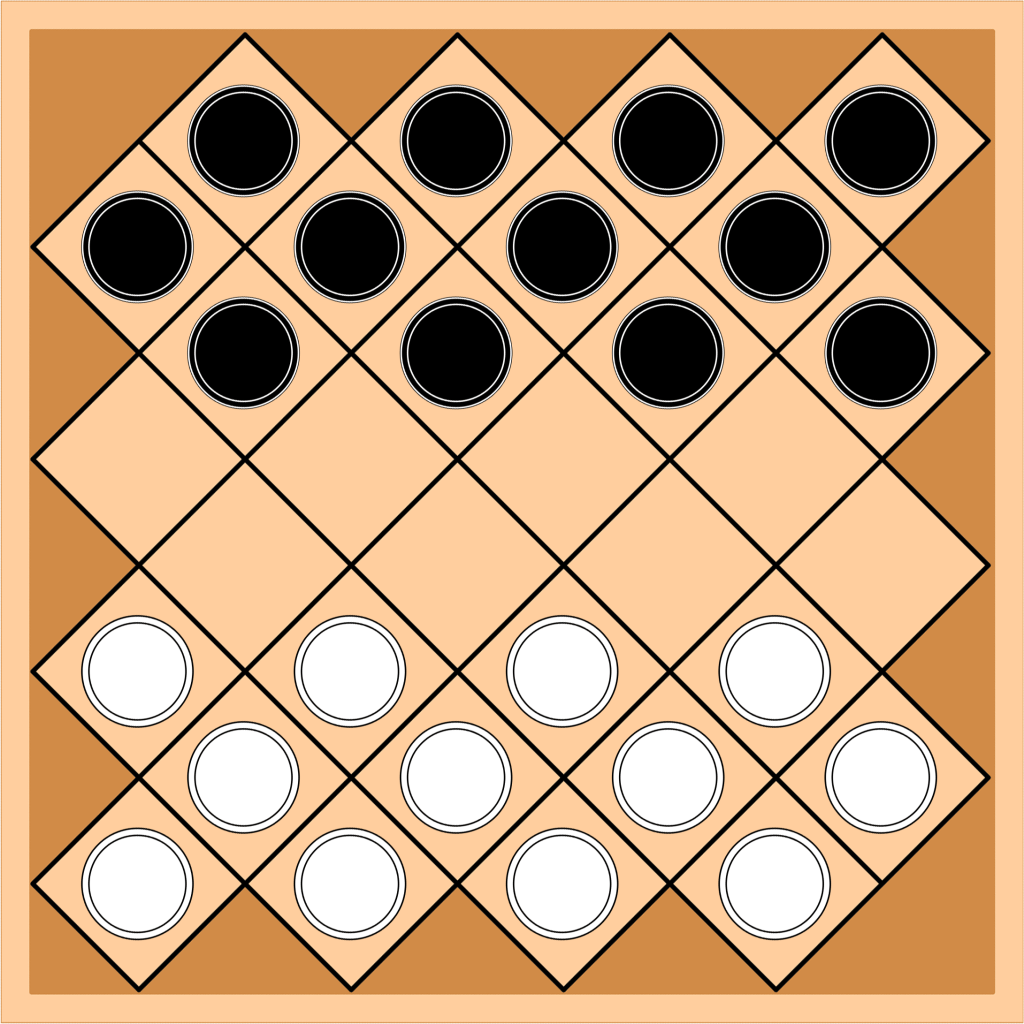
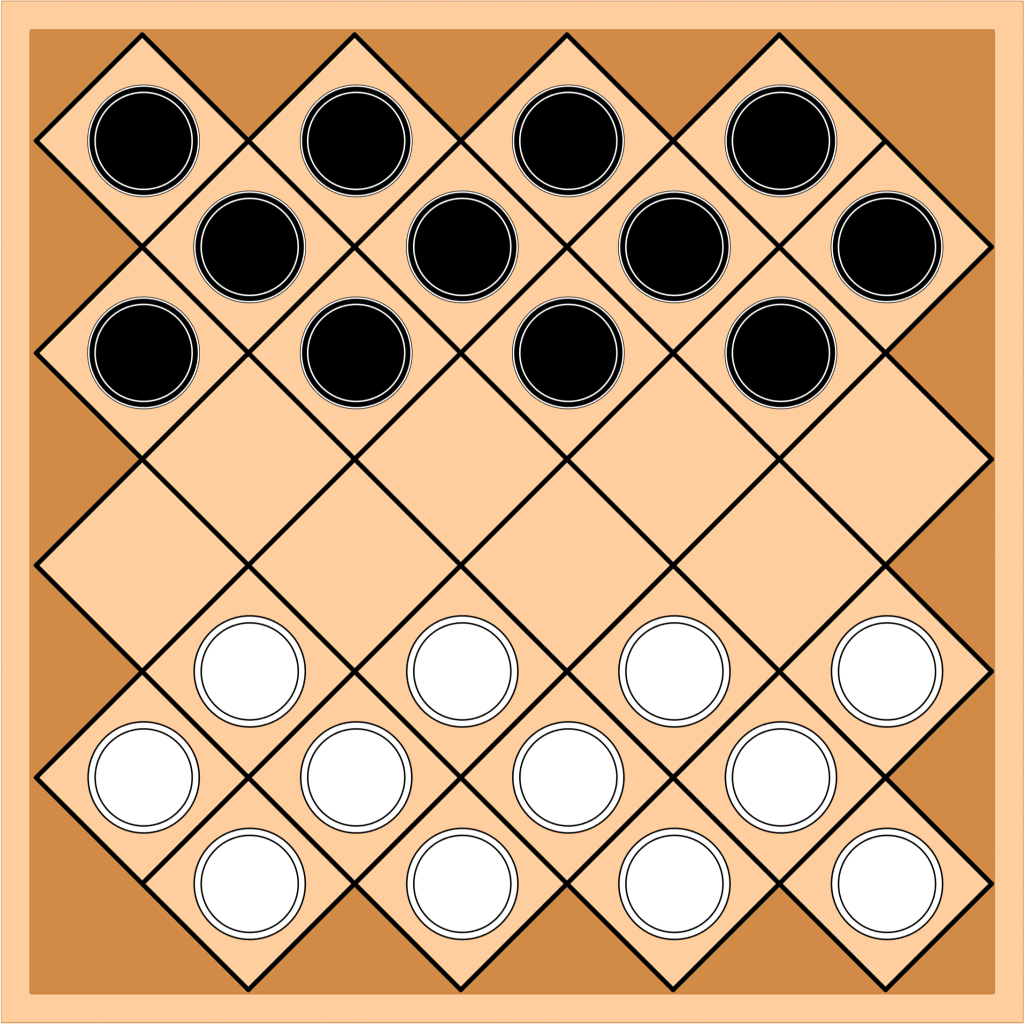
- Equally interesting is a board I found online that uses the spaces in the dama matrix instead of points. This may or may not be a mistake but nevertheless still interesting to note.
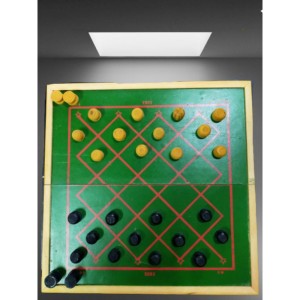
- Checkers is usually spelled chequers in British English.
All right! I think that concludes today’s post. If you have any questions, clarification or violent reactions just comment down below. Thank you for reading. Have fun and enjoy playing dama! God Bless =>
*Photo used for featured image by Tai’s Captures on Unsplash

